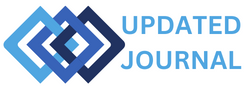Patients can benefit from the reassurance that there is always a professional healthcare team to support them.
RPM allows doctors to watch changes in vital signs live, ensuring they are alerted to any fluctuations. This can reduce emergencies and hospitalizations.
Cellular remote monitoring devices are user-friendly and engaging by design, encouraging patients to participate in generating their medical data and comply with their doctor’s instructions.
Reduced Risk of Complications
As many primary care providers are retiring or leaving the practice, remote monitoring technology helps to fill the gaps. RPM also allows clinicians to see how patients’ symptoms evolve, giving them the information they need to provide more proactive and effective treatment. The reassurance that a team of medical professionals constantly monitors their health and well-being brings a sense of peace to patients. In the case of patients with high-risk diseases, this can mean the difference between life and death. The convenience of remote healthcare monitoring can eliminate the need for physical visits, which can be inconvenient and stressful for patients with debilitating conditions. This allows them to enjoy reduced travel costs and avoid exposure to potentially harmful infections while visiting their healthcare providers. This will enable patients to maintain a more consistent relationship with their primary care provider, improving patient engagement and overall health outcomes.
Better Communication Between Patients and Doctors
Often, doctors need to communicate a lot of information in a short amount of time. They might have to explain their diagnosis, how to manage specific symptoms and medications, or how to prevent future complications. This is a lot to process, and patients might need clarification.
With CMS remote patient monitoring, clinicians can follow up on these conversations with text messages or video calls. This allows them to ensure patients have all the necessary information and can answer any questions.
As a result, patients can feel confident they have an entire healthcare team looking for their health and safety. That sense of reassurance gives many patients peace of mind and the mental freedom to continue managing their condition at home with a reduced risk of complications. For chronic care patients, this is a life-changing benefit. They can skip inconvenient and expensive hospital visits while still receiving the necessary care.
Improved Quality of Life
Patients who are monitored remotely can live a more comfortable lifestyle. They can continue working, studying, or even vacation without worrying about missing a checkup. For chronically ill patients, this is especially important as they often suffer from conditions that are hard to monitor on their own.
The data collected from remote monitoring helps doctors better understand a patient’s condition. This helps them develop a more personalized treatment plan. It also allows them to prevent complications and reduce the risk of hospital readmissions, a considerable cost for hospitals.
In one study, patients with heart failure who used remote monitoring said they “gained the confidence to self-manage their condition at home by telemonitoring and felt they had more control over their health care because of the ability to communicate their data.
Reduced Hospitalizations
One of the most significant benefits of remote patient monitoring that translates to patients is that they are less likely to be hospitalized. Especially during the COVID-19 pandemic, when hospitals are filled, RPM helps limit the number of hospital admissions by allowing patients to be monitored at home to avoid escalation to hospitalization.
This also allows for a more proactive approach to care, with doctors being able to keep an eye on patient readings and alerting them if there is a noticeable clinical deterioration before it becomes symptomatic. The best RPM platforms also provide communication tools that help ensure patients are always up to date with their readings and have a means of asking any questions or addressing concerns without having to come in for a visit.
Additionally, when patients need to go in for a visit, they are not spending money on travel expenses, parking, childcare, and time off work that comes with going to a physical office.

